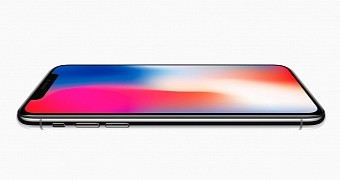Apple launched its very first OLED iPhone in September, and people with knowledge of the matter said earlier this year the company was preparing the full transition to OLED in 2018 when all its models were supposed to abandon LCD.
And now another report claims that this isn’t entirely true, and one of the reasons could be Apple’s struggle to keep the iPhone price down, as well as the company’s efforts to increase profits – and judging from Apple’s heritage, it could very well be the latter.
The WSJ writes that Apple is still considering an LCD iPhone for the 2018 lineup, though this might not be the first option, as the firm is struggling to deal with OLED production issues, including the limited capacity of its suppliers.
LCD iPhone just a temporary solution
One of the reasons the iPhone X is launching later than the other 2017 iPhone models is the short OLED supply, as Apple is exclusively working with Samsung on panels for its anniversary model.
For 2018, however, Apple planned to reduce reliance on Samsung and in addition to working with the South Korean firm, to expand its partnership with LG Display, who is setting up a new production facility specifically for building iPhone displays.
The LCD iPhone could be a backup plan in case Apple’s efforts to reach the estimated OLED production capacity fail, and the report claims that the company is currently discussing with Japan Display for a partnership over full active LCD panels.
Already in use on the Xiaomi Mi Mix 2, full active LCD displays are seen by Apple as the most advanced replacement to OLED, as they allow for bezels as thin and 0.5mm, hence providing more space under the hood, and a lower price tag.
Apple using LCD for one more year, however, is only a temporary decision, as sooner or later Cupertino is still expected to make the full transition to OLED. The company’s partnership with Samsung comes to an end in 2019, so by that time, Apple should already set up production lines for OLED displays that would be able to match the estimated demand for its iPhones.

 14 DAY TRIAL //
14 DAY TRIAL //